
ACTA OPTICA SINICA
Scope & Guideline
Advancing Discoveries in Light and Materials
Introduction
Aims and Scopes
- Optical Materials and Devices:
Research on the development and characterization of new optical materials, including semiconductors, nanomaterials, and metamaterials, aimed at enhancing device performance in applications such as sensors, lasers, and photodetectors. - Optical Imaging and Sensing Technologies:
Innovative imaging techniques and sensor technologies that utilize optical methods for various applications, including biomedical imaging, environmental monitoring, and industrial inspection. - Quantum and Nonlinear Optics:
Exploration of quantum phenomena in optical systems and the development of nonlinear optical technologies, including quantum communication, entangled photon sources, and nonlinear frequency conversion. - Optical Communication Systems:
Research on optical communication technologies, including fiber optics, free-space communication, and advanced modulation techniques for high-capacity data transmission. - Remote Sensing and Environmental Monitoring:
Utilization of optical technologies for remote sensing applications, including atmospheric studies, ecological monitoring, and climate change research. - Metrology and Measurement Techniques:
Development of advanced metrology techniques for precise measurement of optical properties, including phase measurement, interferometry, and imaging techniques. - Optical Design and Simulation:
Research on innovative design methodologies for optical systems, including computational modeling, system optimization, and performance evaluation.
Trending and Emerging
- Metasurfaces and Nanophotonics:
There is a notable increase in research related to metasurfaces, which manipulate light at the nanoscale, enabling novel optical functionalities and applications in imaging and sensing. - Machine Learning and AI in Optics:
The integration of machine learning and artificial intelligence techniques in optical research is gaining momentum, particularly in imaging, data analysis, and system optimization. - Quantum Technologies:
Research in quantum optics, including quantum communication and quantum imaging, is on the rise, reflecting the growing interest in harnessing quantum phenomena for advanced applications. - Biomedical Optics and Imaging:
The field of biomedical optics is expanding, with increasing studies focused on advanced imaging systems and sensing technologies for medical diagnostics and treatment monitoring. - Optical Fiber Sensors and Communication:
There is a growing emphasis on optical fiber technologies, particularly in sensor applications and communication systems, driven by the demand for high-speed data transmission and environmental monitoring. - Environmental and Atmospheric Optics:
Research into the application of optical technologies for environmental monitoring, including air quality assessment and climate studies, is emerging as a significant focus area.
Declining or Waning
- Traditional Optical Components:
Research on conventional optical components like lenses and mirrors appears to be waning, as newer technologies such as metasurfaces and integrated optics gain prominence. - Basic Optical Physics:
Studies focused on fundamental optical phenomena without application context are becoming less common, reflecting a trend towards applied research with direct technological implications. - Optical Data Storage Technologies:
Interest in traditional optical data storage methods, such as CD and DVD technology, has decreased as digital storage solutions evolve, leading to less coverage in recent issues. - Optical Coatings and Thin Films:
While still relevant, the number of papers specifically addressing optical coatings and thin films is declining as research shifts towards more complex integrated systems and multifunctional materials.
Similar Journals

JOURNAL OF MODERN OPTICS
Illuminating the Future of Optical ScienceJOURNAL OF MODERN OPTICS, published by Taylor & Francis Ltd, stands as a prominent bi-monthly journal contributing to the fields of Atomic and Molecular Physics and Optics. With an ISSN of 0950-0340 and an E-ISSN of 1362-3044, this journal aims to disseminate high-quality research that pushes the boundaries of optical science and its applications. Since its inception in 1981, and particularly throughout its publications from 1987 to 2024, the journal has consistently published influential studies that are essential for both academic researchers and industry professionals. Ranked in the Q3 quartile for the 2023 category of Atomic and Molecular Physics and Optics, it has a Scopus ranking of #133 out of 224, indicating its steady presence and relevance in the scientific community. Although it does not offer Open Access options, readers can access its rich repository of literature that delves into innovative optical methods, technological advancements, and theoretical frameworks. The JOURNAL OF MODERN OPTICS is an indispensable resource for those seeking to advance their knowledge and research in modern optical science.
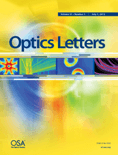
OPTICS LETTERS
Exploring New Frontiers in Light and MatterOPTICS LETTERS is a premier academic journal published by the Optica Publishing Group, dedicated to advancing the field of optics and photonics. Since its inception in 1977, it has maintained a strong reputation for publishing high-impact research, holding a distinguished Q1 category ranking in Atomic and Molecular Physics, as well as Optics, making it a vital resource for researchers and professionals alike. With an impressive Scopus rank of #55 out of 224 in its field, OPTICS LETTERS continues to shape the discourse and innovation in optical science. Authors benefit from its extensive international reach, while readers gain access to cutting-edge studies that address both theoretical and applied aspects of optics. Although the journal currently does not offer open access options, its rigorous peer-review standards ensure that every publication meets the highest academic criteria, making it an essential journal for anyone looking to stay at the forefront of optical research.
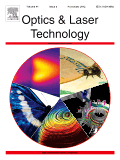
OPTICS AND LASER TECHNOLOGY
Empowering Researchers in the Realm of LightOPTICS AND LASER TECHNOLOGY, published by Elsevier Science Ltd, is a premier journal dedicated to advancing knowledge in the fields of optics and laser applications. With its impressive Q1 rankings across three critical categories—Atomic and Molecular Physics, and Optics; Electrical and Electronic Engineering; and Electronic, Optical and Magnetic Materials—the journal stands at the forefront of scientific discourse, boasting a significant impact factor that underscores its relevance. Since its inception in 1970, the journal has consistently provided a platform for the dissemination of cutting-edge research, key innovations, and reviews that influence both academic study and practical applications. Although it currently does not have open access options, its rigorous peer-review process and inclusion in esteemed indexing services make it a valuable resource for researchers, professionals, and students seeking to stay informed about the latest developments in optics and laser technology. The journal’s ongoing commitment to quality research ensures it remains a vital publication for those engaged in this dynamic field, with a converged projection extending through 2025.
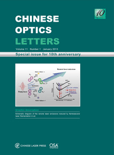
Chinese Optics Letters
Pioneering insights in the realm of optics.Chinese Optics Letters is a prestigious academic journal published by Chinese Laser Press, dedicated to advancing the fields of atomic and molecular physics, optics, as well as electrical and electronic engineering. Since its inception in 2003, this journal has become a significant platform for researchers and professionals to disseminate innovative findings and foster collaboration within these rapidly evolving disciplines. With a commendable Q2 ranking in leading categories including Atomic and Molecular Physics and Electronic, Optical and Magnetic Materials, it ranks favorably within the Scopus database, with notable positions in both engineering and materials science sectors. The journal is headquartered in Shanghai, China, and while additional open access options are not specified, it remains a vital resource for those committed to pushing the frontiers of optical research and applications. As we approach 2024, Chinese Optics Letters continues to play an essential role in shaping scholarly discourse and technological advancement in optics.
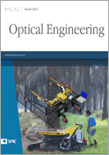
OPTICAL ENGINEERING
Exploring the depths of optical science and technology.OPTICAL ENGINEERING, published by SPIE-SOC PHOTO-OPTICAL INSTRUMENTATION ENGINEERS, is a premier journal in the field of optical and photonic engineering, dedicated to advancing the science and technology of optics, photonics, and imaging systems. With ISSN 0091-3286 and E-ISSN 1560-2303, this esteemed publication has been contributing to the academic community since its inception in 1972, covering a wide array of topics within its converged years of operation. As a recognized entity, the journal is presently positioned in the Q3 quartile for Atomic and Molecular Physics and Optics, and in the Q2 quartile for Engineering (miscellaneous) as of 2023. The journal’s Scopus ranks reflect its impact and significance, being placed at #129 out of 307 in General Engineering and #137 out of 224 in Atomic and Molecular Physics. Although it does not operate under an open access model, the journal remains a vital resource for researchers, professionals, and students seeking the latest advancements in optical engineering. With a focus on publishing innovative research and technical advancements, OPTICAL ENGINEERING continues to be essential for driving progress in this crucial scientific field.

Optics Continuum
Illuminating the Future of Optics ResearchOptics Continuum, published by Optica Publishing Group, is a pioneering open access journal dedicated to advancing the field of optics and photonics. Since its inception in 2022, this journal seeks to provide a vital platform for the dissemination of groundbreaking research and innovative developments across several interconnected domains, including electrical and electronic engineering, atomic and molecular physics, and material sciences focused on electronic, optical, and magnetic materials. With impressive rankings in Scopus—placed #384 in Electrical and Electronic Engineering and #109 in Atomic and Molecular Physics—the journal aims to engage a diverse readership comprised of researchers, professionals, and students, promoting collaboration and knowledge exchange. The journal's open access model ensures that cutting-edge research is readily available to all, nurturing an inclusive academic environment. For those interested in staying at the forefront of optics research, Optics Continuum is an essential resource that continuously enriches the global scientific community.

OPTICA APPLICATA
Empowering Knowledge in Optical ApplicationsOPTICA APPLICATA, published by Wroclaw University of Science and Technology, is a crucial platform for advancing knowledge in the fields of Atomic and Molecular Physics and Optics. With an ISSN of 0078-5466 and an E-ISSN of 1899-7015, this journal serves as a vital resource for researchers, professionals, and students seeking to explore the latest developments and applications in optical science and engineering. Although currently categorized in the fourth quartile in both Atomic and Molecular Physics and Electronic, Optical and Magnetic Materials, its commitment to publishing high-quality research articles, reviews, and technical notes remains unwavering. The journal covers diverse topics from practical applications to theoretical insights and fosters a collaborative environment for global contributors. While it does not offer an open access option, the journal is accessible through university libraries and institutional subscriptions. With an eye towards bridging academic research with real-world applications, OPTICA APPLICATA is well-positioned to influence advancements in photonics and materials science through ongoing issues from 1988 to 2024.
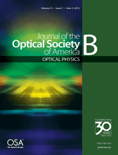
JOURNAL OF THE OPTICAL SOCIETY OF AMERICA B-OPTICAL PHYSICS
Illuminating the Future of Optical ScienceJOURNAL OF THE OPTICAL SOCIETY OF AMERICA B-OPTICAL PHYSICS, published by Optica Publishing Group, serves as a leading platform for groundbreaking research in the fields of optical physics, atomic and molecular physics, and statistical and nonlinear physics. With an ISSN of 0740-3224 and an E-ISSN of 1520-8540, this esteemed journal has been in circulation since 1984 and is dedicated to advancing the understanding of optical phenomena and related technologies. It holds a commendable position in the academic community, with a 2023 Scopus ranking reflecting its significance—placing it in the top quartile for both Atomic and Molecular Physics and Statistical and Nonlinear Physics. Although it is not an open-access publication, it provides extensive access options to ensure that research is disseminated effectively within the scientific community. This journal is instrumental for researchers, professionals, and students alike, aiming to keep them informed of the latest advancements and trends in optical science. With a convergence of expertise and innovation, JOSA B continues to play a pivotal role in shaping the future of optical research.

Journal of Optics-India
Shaping the Future of Optics ResearchThe Journal of Optics-India, published by SPRINGER INDIA, serves as a vital platform dedicated to advancing research in the field of optics, focusing on topics in both atomic and molecular physics. With an ISSN of 0972-8821 and an E-ISSN of 0974-6900, the journal has been a consistent contributor to the field since its inception in 1996 and continues to thrive with its anticipated convergence through 2024. Although currently classified in Q3 of the 2023 category quartiles, the journal actively seeks to elevate its standing within Scopus rankings in physics and astronomy, where it holds a rank of 143/224, indicating significant opportunities for growth and research impact. The Journal of Optics-India is committed to fostering innovative research and providing scholars and practitioners with access to cutting-edge findings, thereby enhancing global conversations around optics and its vast applications. As a reliable source for researchers, professionals, and students alike, the journal emphasizes quality contributions that shape the future of optical science.

OPTICS COMMUNICATIONS
Advancing Knowledge in Photonics and CommunicationOptics Communications, published by Elsevier, is a prestigious international journal that focuses on the dynamically evolving fields of optics and photonics. With its ISSN 0030-4018 and E-ISSN 1873-0310, this journal has made significant contributions to the fields of Atomic and Molecular Physics, Electrical and Electronic Engineering, Electronic, Optical and Magnetic Materials, and Physical and Theoretical Chemistry, consistently ranking in the Q2 quartile across these categories for 2023. The journal, based in the Netherlands, is recognized for its rigorous peer-review process and aims to publish high-quality research articles that advance knowledge and applications in optical communication technologies. Although it operates under a subscription model, the insightful research published here plays an essential role in informing the work of researchers, professionals, and students alike. With a history dating back to 1969 and spanning well into 2025, Optics Communications remains a crucial resource for cutting-edge developments in optics, catering to a global audience dedicated to innovation in this pivotal science.